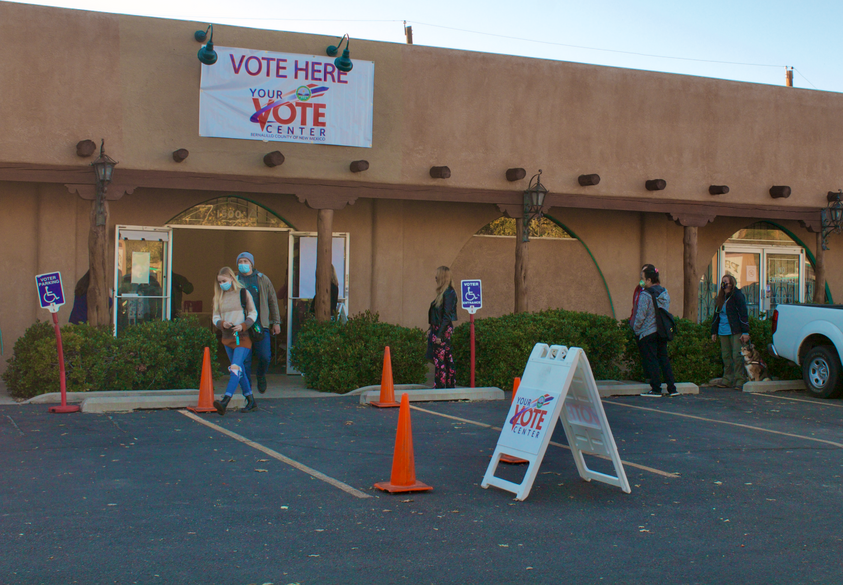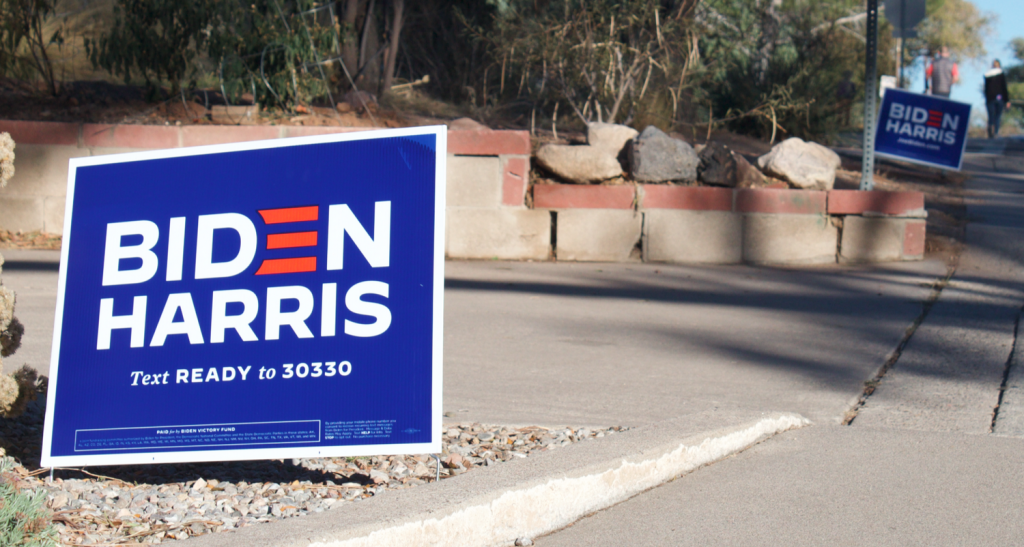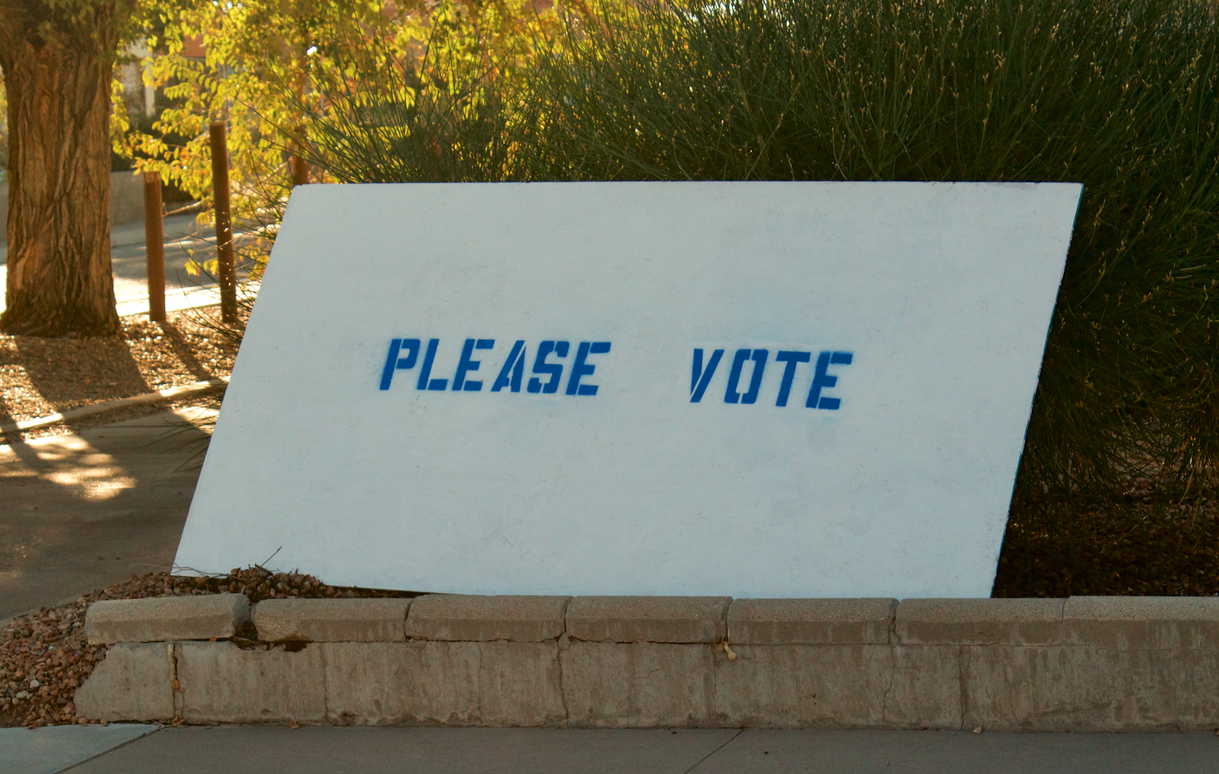By Gordon Payne / NM News Port
Young people are expected to make up an unprecedented portion of the electorate in 2020 as Millenials and Gen Z build on the momentum from the midterm elections and conversations about race, economic disparity and the environment.
2018 saw a historic turnout of young voters — 18 to 29-year-olds — at the polls, as voter turnout among that demographic went from 20% in 2014 to 36% in the last midterm election, the largest percentage point increase for any age group.
A recent Havard study found the momentum from the midterm elections will likely carry forward as more and more young people are planning to vote. With nearly half a million New Mexicans having already voted in the 2020 election, it appears New Mexico is headed toward a record voter turnout this year. But it’s unclear whether this is just regular voters changing how they vote due to the pandemic and how many of those voters are under the age of 29.
Voter participation in midterm elections is always lower than in general elections, Jessica Feezell, an associate professor of political science at the University of New Mexico, said. The increase in participatory engagement among youth in the last midterm election is a good indicator of increased participation in the 2020 election, according to Feezell.
![]()
“I think the issues that are important to young people today are different than they’ve been in the past. For example, Gen Z reports climate change is their number one issue, followed by racism and then economic disparity,” Feezell said. “So I think youth voters, with these three issues as their top driving issues, are going to be more engaged and fired up about this election than we’ve seen in a very long time, if ever before.”
A Washington Post article explains young people are interested in a variety of issues, but those who are likely to vote are most interested in progressive answers to complex problems like the ones Feezell mentioned —racism, economic disparity and the environment — as well as education reform, immigration and reproductive rights.

According to a recent poll by Forbes, if young voters participate in this election they will likely vote Democratic and support Joe Biden and Kamala Harris as president and vice president.
27-year-old Brianna Gallegos, president of the Young Democrats of New Mexico (YDNM), explained that young voters’ support for Biden comes from his acknowledgement of the types of issues that young voters are passionate about.
Matthew Zank, state chairman for the New Mexico College Republicans (NMCR), is excited to see a group that has been historically underrepresented in the polls finally exercise their right to vote regardless of their political affiliation.
“Obviously young people are more likely to support Joe Biden and Kamala Harris,” Zank said. “Young people vote mostly Democratic, at least in the last election, but I think that young people are diverse, we’re not a monolith. Young voters do tend to vote more to the left, but I think what we’ll see is more attention to issues that matter to us as younger people in general … Despite what a lot of people say, President Trump has done a really good job at making young people want to go vote whether it’s for him or against him.”
The Harvard youth poll found that Trump’s presidency has spurred young Americans to become politically active, particularly on the left. 43% of young Democrats say they are more politically active as a result of Trump, compared with 35% of Republicans under 30.
Gallegos said that besides their opposition to Trump, social media plays no small role in activating Millenials and Gen Z and bringing their attention to social issues. Together these two groups made up 36% of eligible voters in 2018, the largest percentage point increase for any age group.
“Something that we’re seeing right now is a really strong sense of community on these different social media platforms,” Gallegos said about social media’s growing role in the political process. “I think with that community a lot of healthy conversations have been started and are continuing as the election evolves.
“They also provide additional avenues where we’re finding easier ways to get involved with organizations like Black Lives Matter and support specific environmental movements. Through that kind of communication, I think that there’s now a dialogue online that is very inclusive and also makes it easier to receive information and that has definitely increased more involvement from young voters and younger people,” Gallegos said.
Research supports the idea that social media campaigns are effective in getting young voters to participate in elections. Evidence suggests that when Facebook, for example, displays a banner at the top of users’ feed that shows who in their network voted, it leads to a significant increase in voter turnout.
“I think that 2018 is a great example of how effective online campaigns can be,” Zank said. “We saw turnout incredibly bolstered and there was a lot of momentum, a lot of enthusiasm. I think that especially in this digital age it’s a lot easier to say, ‘Hey, I voted and you should go vote too.’ People are sharing themselves voting on Twitter or Facebook or Instagram. Besides that, there’s a lot of get-out-the-vote movements on these platforms that are targeted towards younger people with an emphasis on getting people to register to vote and actually go to the polls.”
![]()
YDNM have done multiple voter registration events in the past as well as events outside of elections and campaign cycles as part of a continuous effort to educate people on voter registration. They have also hosted multiple events online discussing issues with different candidates in local elections or panels amongst themselves and their peers, making use of various social media platforms.
“This campaign cycle and election cycle is very different from anything we’ve ever experienced because we had to resort to really increasing our online presence and engaging with various voters — new voters and next-generation voters — via email and online platforms,” Gallegos said, commenting on the difficulty of conducting voting events during the COVID-19 pandemic.
“However, there are immediate consequences if we do not vote for change, if we do not see that there needs to be change and recognize that we all have to be involved in order to ensure that that change happens. I think as soon as we start directing or changing the dialogue to be more inclusive to young people we’ll see higher turnout rates and better representation,” Gallegos said.

Despite being the most vocal supporters of social movements like the George Floyd demonstrations of this past summer, low turnout has historically been an issue for young voters.
“There are a few things that play into young voters being really vocal but not showing up to the polls,” Feezell said. “Some of them are psychological and some of them are institutional. Psychologically, I think a lot of youth feel that the mainstream government doesn’t represent them and doesn’t satisfy their needs as citizens. That’s largely because the mainstream government is responding to who votes, and youth historically don’t vote as much as older populations.”
Feezell explained this is why politicians seeking election often focus on issues that older demographics with higher voter turnout rates care about and why young people feel so misrepresented in contemporary American politics.
“So on one hand they feel that the government doesn’t represent them and therefore they don’t feel that’s the proper way to invoke change,” Feezell said. “On the other hand there’s a lot of institutional things working against young voters. First, they have to register and that’s an additional obstacle that older generations don’t have to deal with when going to the polls. Additionally, young voters tend to be much more mobile and that makes it confusing to get registered.”
But if the Harvard and Forbes polls are correct, we can expect increased voter participation in 2020 from young people to lead to increased representation of their political values.
“In order to get what you want, you have to vocalize exactly what that is,” Gallegos said. “My advice to young voters would be that it’s okay to be vulnerable and not know what to ask or where to start. But if we can all join together and support each other we can achieve an outcome that will benefit everybody.”
Gordon Payne is a reporter for New Mexico News Port. He can be contacted on Twitter @GordonPayne18 or by email at nmnewsport@gmail.com.
